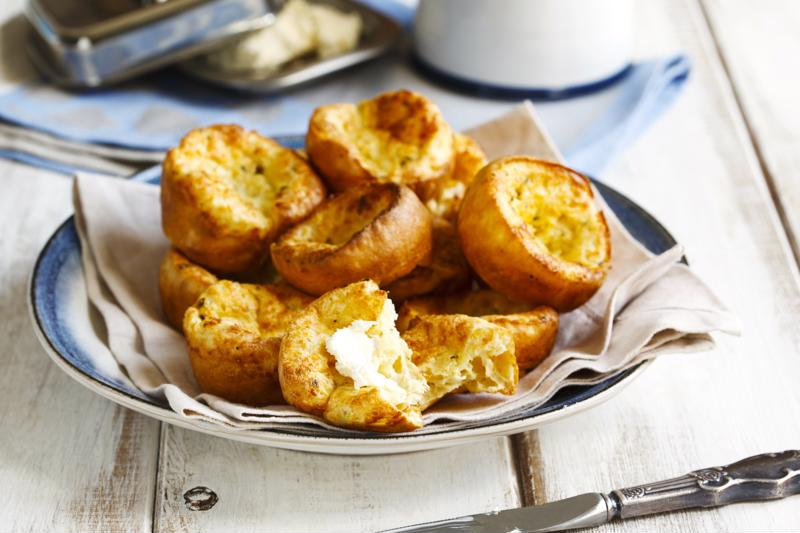It isn't a muffin. It isn't a cupcake. It isn't a frittata. It's a popover. When it comes to simple baked goods with potential for complex flavor combinations, the popover is perhaps king. If you're a culinary arts student studying through August Escoffier's online campus, then you've probably come across Yorkshire pudding. But you may not yet have encountered the American equivalent to this classic from across the pond: the popover.
The beauty of the popover is that, like a croissant, it's delicious enough to be eaten by itself or with just a light spread of butter, but it can also be filled with just about anything under the sun.
If you're new to the world of popovers, then you – and your customers – are in for a treat. This American classic is almost sure to become a brunch favorite.
What exactly is a popover?
The popover is particularly popular in New England cities like Boston. Like Yorkshire pudding, the batter is made from a simple combination of flour, salt, eggs, milk and butter. The only notable difference is the type of pan used. A Yorkshire pudding is traditionally made with a typical, angled muffin pan, whereas the popover is baked in a special popover pan. Think of it as a slightly deeper, more cylindrical muffin pan. The only other highly technical difference, according to the Breakfast Drama Queen, is that the pans used in Yorkshire puddings are traditionally greased with beef fat, as Yorkshire pudding is most often served as a savory dish.
A well-baked popover will be light and airy and have a golden-brown hue. It gets its name because the air beaten into the eggs and the steam from the wet batter cause the pastry to puff up and pop over the tin, giving it its characteristic, fluffy top. Popovers are fairly easy to make. The important things to remember are:
- Before adding the flour, be sure to really beat the eggs and milk well to aerate the mixture.
- Don't over beat the batter once you've added the flour, as this develops gluten, leading to a slightly tougher texture.
- Preheat the tin before you grease it and put the batter in. This is crucial to getting a good rise and crisp exterior.
- Be selective in the type of cooking grease you use, as it will affect the flavor. Salted butter, for example, will give it a slight savory taste which could complement a more savory filling. For a sweeter filling, you may want to go with a neutral cooking oil.
Other than that, the popover is as simple to make as it is delicious.
 You don't have to make your popovers in a popover tin, but as you can see in this image, they'll end up looking like Yorkshire pudding if you don't.
You don't have to make your popovers in a popover tin, but as you can see in this image, they'll end up looking like Yorkshire pudding if you don't.What's so great about popovers?
One word: versatility. Rather than treating popovers simply as a simple roll to be eaten with butter (or jam if you're American), they're best when viewed as a type of vessel for your culinary creations. They can be savory, and they can be sweet.
For instance, you might fill savory popover with smoked salmon, cream cheese and chives for brunch. Or you can take the more classic route, and fill it with braised beef and gravy. A classic example of a sweet popover is one loaded with custard and a fruit filling such as apple or blueberry.
But the sky is the limit for your popovers. Load them up with lobster, pulled pork or mashed potatoes. Fill them with chocolate and ricotta drizzled with honey and pistachios. If you're an online culinary student and you're interested in expanding the breakfast and lunch menu, popovers are the way to go.

